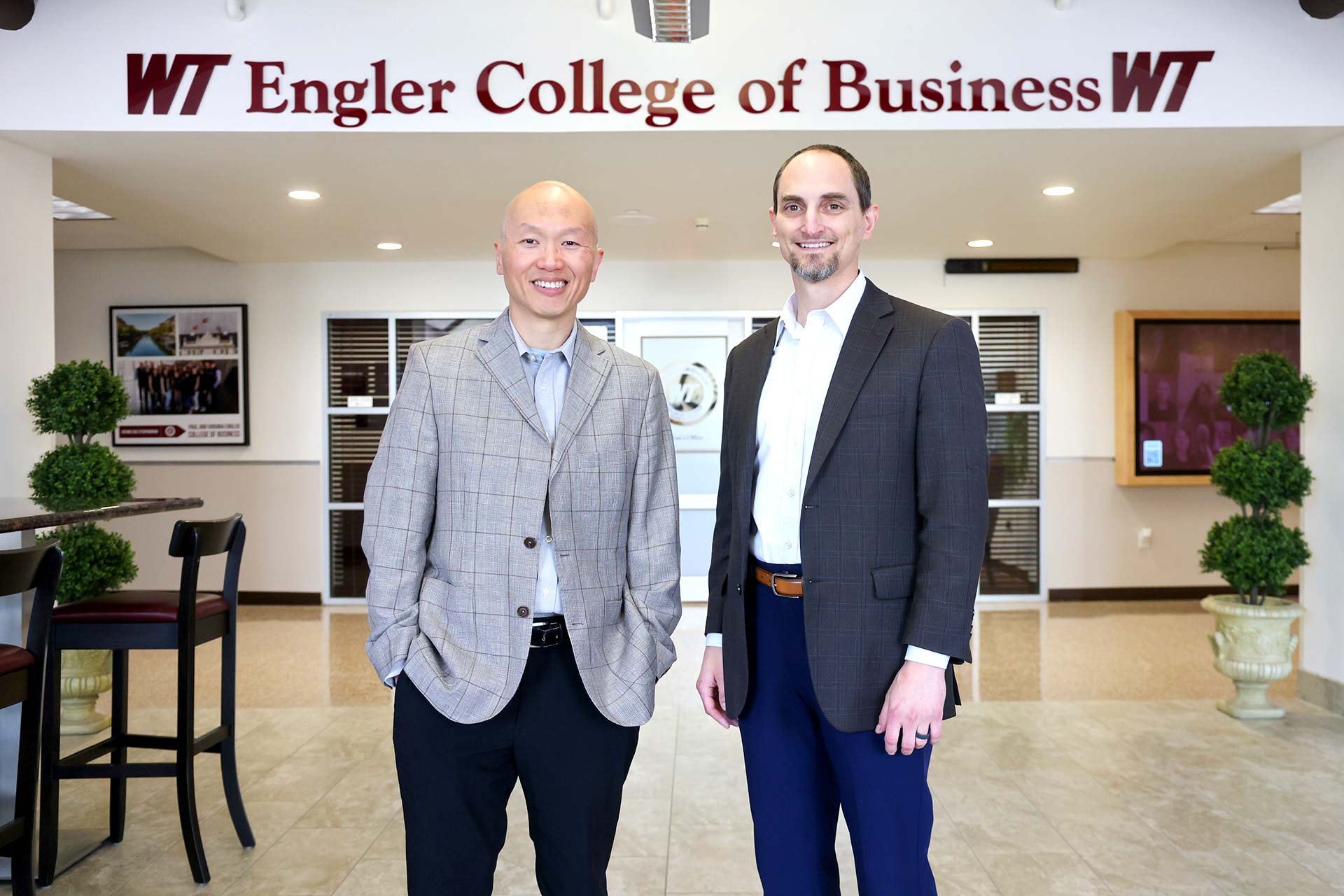- Business
- Featured
Copy by Brad Newman, 806-290-1979, bradmnew@gmail.com
CANYON, Texas — A research paper written by two WT business faculty members about the implications of cannabis use in the workplace has been published in a top journal.
"Up in Smoke: Reciprocal Effects of Cannabis Use and Job Complexity on Extrinsic Career Outcomes" appeared in "Human Resource Management" in March 2025. The paper, authored by Dr. Andrew Li, Williams Professor of Management, and Dr. Jonathan Shaffer, associate dean of strategic initiatives and Pickens Professor of Management, is the result of a three-year-long research project.
Li and Shaffer's research findings suggest that employees who use cannabis are more likely to have less complex jobs, but those low-complexity jobs also lead to increased cannabis use.
"We found that it's a cycle," said Shaffer, noting their use of eight years of data from multiple sources. "Cannabis use leads people to less complex jobs, but being in those jobs leads to more cannabis use."
Li and Shaffer also found that when companies introduce more complex, intellectually challenging, and engaging tasks for employees, cannabis use tends to decrease.
"That's the main takeaway," Li said. "That if companies focus on making the nature of the job more complex, you can reduce the tendency of employees to use cannabis."
The research, both faculty members agreed, is timely, given the increasingly legal widespread use of cannabis in the U.S. Their findings could be useful to human resource departments as they navigate drug use in the workplace.
"More and more people are using cannabis, including at work," Li said. "Unfortunately, many companies do not have an HR policy to deal with that."
"Human Resource Management" is listed as one of the top 50 business journals by "Financial Times."
"Being able to be published in such a prestigious human resource journal is very important to us, as we hope it will bring more exposure to our newly created Master of Science program in Human Resource Management and increase the reach of WT," Li said.
Such research activities are one way in which WT is strengthening its position as a regional research university, a key priority of the University’s long-range plan, WT 125: From the Panhandle to the World.
That plan is fueled by the historic One West comprehensive fundraising campaign, which reached its initial $125 million goal 18 months after publicly launching in September 2021. The campaign’s new goal is to reach $175 million by 2025; currently, it has raised more than $160 million.
About West Texas A&M University
WT, a Regional Research University, is redefining excellence in Canyon, Texas, on a 342-acre residential campus, as well as the Harrington Academic Hall WTAMU Amarillo Center in downtown Amarillo. Established in 1910, the University has been part of The Texas A&M University System since 1990. WT, a Hispanic Serving Institution since 2016, boasts an enrollment of more than 9,000 and offers 58 undergraduate degree programs, one associate degree, and 44 graduate degrees, including an integrated bachelor’s and master’s degree, a specialist degree and two doctoral degrees. The University is also home to the Panhandle-Plains Historical Museum, the largest history museum in the state and the home of one of the Southwest’s finest art collections. The Buffaloes are a member of the NCAA Division II Lone Star Conference and offers 14 men’s and women’s athletics programs.
—WT—

